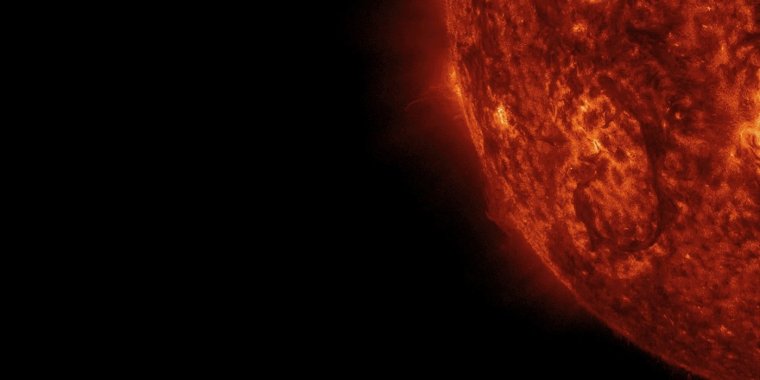| News / Science News |
Solar Storms Can Drain Electrical Charge Above Earth
New research on solar storms finds that they not only can cause regions of excessive electrical charge in the upper atmosphere above Earth's poles, they also can do the exact opposite: cause regions that are nearly depleted of electrically charged particles. The finding adds to our knowledge of how solar storms affect Earth and could possibly lead to improved radio communication and navigation systems for the Arctic.

A solar eruption on Sept. 26, 2014, seen by NASA's Solar Dynamics Observatory. ![]()
A team of researchers from Denmark, the United States and Canada made the discovery while studying a solar storm that reached Earth on Feb. 19, 2014. The storm was observed to affect the ionosphere in all of Earth's northern latitudes.
Solar storms often include an eruption on the sun called a coronal mass ejection, or CME. This is a vast cloud of electrically charged particles hurled into space that disturbs the interplanetary magnetic field in our solar system.
When these particles and the magnetic disturbances encounter Earth's magnetic field, they interact in a series of complex physical processes, and trigger perturbations in the Earth's magnetic field. Those perturbations are called geomagnetic storms.
The interactions may cause unstable patches of excess electrons in the ionosphere, an atmospheric region starting about 50 miles (80 kilometers) above Earth's surface that already contains ions and electrons.
The 2014 geomagnetic storm was a result of two powerful Earth-directed CMEs. The storm initially produced patches of extra electrons in the ionosphere over northern Greenland, as usual.
But just south of these patches, the scientists were surprised to find broad areas extending 300 to 600 miles (500 to 1,000 kilometers) where the electrons were "almost vacuumed out". These areas remained depleted of electrons for several days.
The electrons in the ionosphere normally reflect radio waves back to ground level, enabling long-distance radio communications.
Both electron depletion and electron increases in this layer can possibly cause radio communications to fail, reduce the accuracy of GPS systems, damage satellites and harm electrical grids. (NASA)
YOU MAY ALSO LIKE


